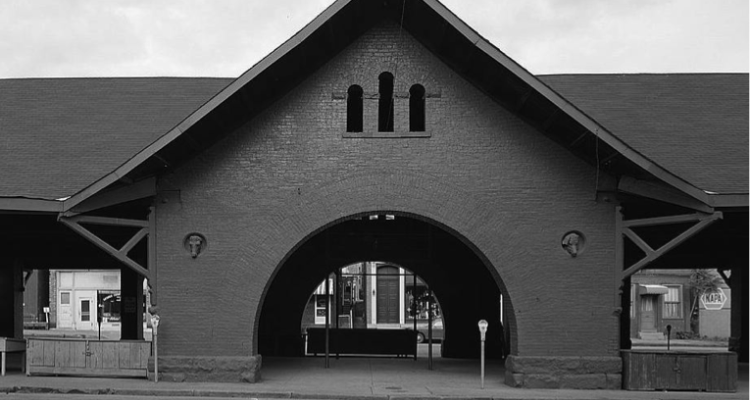The Mabel Files: Part 11
Learning the Colorful History of a Keystone Wheeling Neighborhood
It was a sweltering July Saturday in 1938, when Mabel spotted the “for rent” sign in the window of the little storefront on Market Street directly across the narrow roadway from the red brick Centre Market House. As usual, there was a kind of electricity running through the neighborhood.
Drivers steered their cars around the neighborhood in search of places to park, and big, lumbering trucks driven by men in overalls seemed to worm their way through the traffic to unload and restock the depleted vender booths under the big green roof of the open-sided Market House structure.
Children darted recklessly between parked cars, sales booths, and crowds of people keeping motorists and pedestrians alike on their guard and prompting the occasional angry shout or sharp blast from a car or truck horn.
From inside the Market House, vendors crooned their lists of offerings in song-like chants: “Strawwwwww-berrieees, Bluuuuuue-berrrieeees, Cher-er-er-ries.”
There were people laughing, arguing, bargaining, and loudly making plans for the rest of their Saturday visit to Wheeling—the region’s shopping and entertainment hub. There were even young men dressed as cowboys wearing wide-brimmed white hats, shirts embroidered with images of cows and cacti, and leather chaps around their legs. They were passing out fliers to drum up business for that night’s WWVA Jamboree.
Radios set to different stations and blaring old-time music, radio comedies, farm reports, and big-band dance music blended into a whirl of sound that wafted into the street from the open windows of second-floor apartments along the street.
The smell of fresh fruit was in the air, but so was the smell of some kind of meat being cooked on an open grill, fried cod from Coleman’s Fish Market, and exhaust fumes from the noisy collection of cars and trucks that prowled the streets. It was all mixed with the overriding aroma of baked bread from the Stroehmann’s Bakery just around the next corner.
This Saturday morning, like most every Saturday since the older upper Market next door opened in 1853, shoppers from miles around converged on the neighborhood to buy fresh fruits, vegetables, meats, and cheeses from farmers who set up shop in busy little booths inside the lower red brick Market House.
On this day, Mabel was just passing through. Every Saturday she and her mother, Lizzie, briskly walked the long distance from the little Jacob Street apartment/confectionary store run by her father, Tom, on their way to the “five-and-dime” stores or L.S. Good’s store uptown to buy material for sewing projects or other household goods. The sights, sounds, and smells of the Centre Market on a Saturday had always fascinated Mabel. But, now, for the first time, she thought about actually living amid all the action because she spotted that “for rent” sign.
It was on the corner of 23rd and Market streets on the east side. It had a storefront with four rooms behind it—two bedrooms, a kitchen and a little living room/dining room combination. Lizzie held onto Mabel’s elbow and they ventured inside the open door to look around. They found the owner inside. His name was Shaffer, and he explained that the retail space and apartment was available for rent at a reasonable rate.
When Tom heard Mabel and Lizzie describe the new opportunity, he was convinced and 30 days
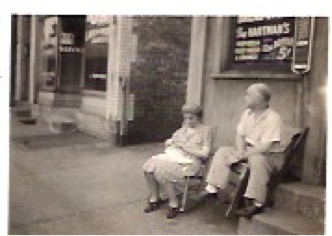
later, the Minns Family moved their belongings and store stock of light confections, candy, tobacco, pop, bread, and milk into the Market Street store with the help of an army of young people led by Mabel’s beau, George.
It was the beginning of an interesting phase of the little family’s life. New characters came into the store; George, proposed; and the newspapers Tom sold began to run stories about unrest in Europe. This was where the family lived when George announced that he had been drafted, when they learned about Pearl Harbor and the start of war, and when Mabel found her first out-of-the-home work conducting children’s story time at the Ohio County Public Library just down the street.
Several weeks after the Minns settled in, George noticed an old man who sat for hours each day on the stoop in front of the building two doors to the north of the Minns store. The old fellow was feeble but jovial. He traded quips and shared laughs with any pedestrian who took the time to chat. One day as George passed by the man, he struck up a conversation—an encounter that turned into a three-hour neighborhood history lesson.
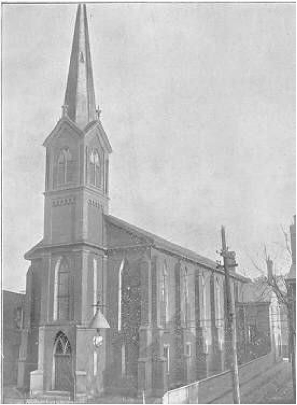
When George finally came into the store later that night and sat down with the family for dinner, he had tales to tell about the new neighborhood and the role it had played in Wheeling’s history, courtesy of their 88-year-old neighbor.
“The old man who sits out front every day is named Ernst,” George explained to Tom, Lizzie, and Mabel as the family dug into one of Lizzie’s pot-roast and potato suppers. “He was born here in Wheeling in 1850, and he told me some very interesting stories about the neighborhood. It seems Ernst’s father came from Germany, and he had a shop where he repaired buggies. Ernst lived in a comfortable three-story brick townhouse just south of Wheeling Creek—just a few hundred yards away from here. I guess this part of town was mostly a German neighborhood in those days. Lots of Germans seemed to settle here. Anyway, Ernst can remember way back to the days when the West Virginia wasn’t even a state yet.”
Ernst told George about the old Evangelical Lutheran Zion Church at 2118 Market Street (now the Towngate Theater) and how he and his mother were almost killed inside when a tornado hit in 1852.
“Ernst couldn’t remember it, of course, but he did remember his mama telling him about what happened,” George explained. “The tornado hit hard and quick. The roof of the church fell in, and the north and south walls were damaged. The really bad part was that three children were killed from the falling bricks and the roof. Ernst said he was almost killed too. He said it was a really bad time, and the community took a long time to get over the children’s deaths and the damage to their church. He also said he thinks the place is haunted by the spirts of the dead children.”
Tom drummed his fingers on the dining table. Mabel sat wide-eyed. Lizzie , who ate like a bird, had already finished eating and taken up her crochet work.
“That’s a bit of a depressing story George,” Lizzie said. “Didn’t Ernst have any uplifting things to say?”
George spooned another helping of potatoes onto his plate.
“Oh that’s just the beginning,” he responded. “Wait till you hear about the rallies they used to have here, and the strange story of how they built the library down the street.”
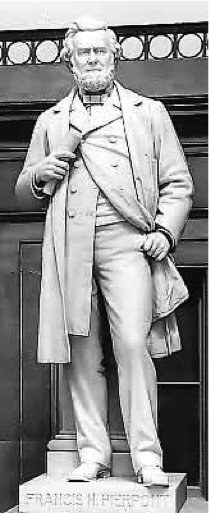
According to Ernst, who was 12-years-old at the time, the older upper Market was the site of a torchlight rally on Aug. 2, 1862, when Francis Pierpont, governor of the Restored Government of Virginia, made a rip-roaring speech in support of the Union. The agitated crowd immediately formed committees to draft resolutions expressing support for the federal government and authorizing the recruitment of troops to go join the Union Army. Aware of his predominantly German audience, Pierpont called them the “bone and sinew” of the city.
George then told the family about how the Market House was an assembly point for Union troops and how Ernst recalled chatting with soldiers who rested with their backs against the Market walls while cleaning their rifles and bayonets.
“Ernst swears he saw General George McClelland himself ride in, tie up his horse, and go inside the Market to get food for his train ride from Wheeling to Washington, D.C., where he took command of the whole Union Army after the First Battle of Bull Run,” George said. “McClelland was in Wheeling commanding the Department of the Ohio when Lincoln telegraphed him to come and take over.”
Tom, a Civil War enthusiast and avid Union supporter, pricked up his ears at the war stories.
“Then Ernst told me about when some guy was almost hanged right in front of the Market for trying to work up a cheer for Jeff Davis,” George said. “He said Union soldiers broke up the mob and saved the southern sympathizer’s life by firing their rifles over their heads.”
Lizzie fidgeted.
“There you go again, George,” she said. “Can you keep it positive?”
George thought for a moment.
“How about this,” he offered. “Ernst explained how dominant German heritage and customs had once been in the neighborhood in the old days. He said there had once been 11 different singing societies in Wheeling that sponsored famous singing festivals in 1898 and 1906 called Saengerfests that drew crowds from all over the Eastern United States to Center Wheeling.
“And about the library,” George continued. “You know how there’s all those libraries all over the place named for Carnegie? Well, I guess Mr. Carnegie built them for free in lots of towns and offered to build one in Wheeling. All Wheeling had to do was buy the land and the books and maintain it. Carnegie would do the rest. The city authorized a vote on a $50,000 library levy to make it happen. But, Ernst said the unions were against it because they hated Andrew Carnegie so much. They worked to defeat it, so in 1904, the levy was beaten by 201 votes, and Wheeling became the first American city to reject a free Carnegie Library. Ernst said the only reason we have the one we have up the street now is that the Ohio County Board of Education eventually voted to build a library with its own money in 1911.”
George remembered another tidbit that might interest his future mother-in-law.
“Here’s one you will like, Abby. (George always called Lizzie Abby because she reminded him of a character by that name in one of the family’s favorite books.) “You remember that book we read last year called ‘Life in the Iron Mills’ by a woman named Rebecca Harding Davis? Well, according to Ernst, she was the daughter of Richard Harding, the city treasurer, and they lived up across from the Second Presbyterian Church at 20th and Market streets. She eventually worked as a reporter for the Wheeling Intelligencer before becoming a famous writer and moving to New York.”
Mabel chimed in.
“That was the book about women and the effect that conditions in the iron mills had on family life back in the 1860s,” she said. “I’ve heard people say it was about Wheeling.”
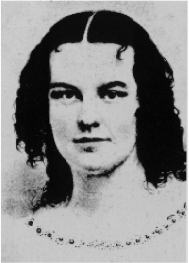
George said that according to Ernst, the second lower Market, the one across the street from the store, was built in 1891 and was designed by a Wheeling architect named Edward Bates Franzheim, who also designed Vance Memorial Presbyterian Church, the Board of Trade/Court Theatre and had a hand in renovations to the Fort Henry Club and the Oglebay Mansion.
“Ernst said he remembers watching Franzheim visit the building site for the lower Market,” George said. “He said Franzheim was a bit of a dandy and carried a yellow cane and gloves and wore spats.”
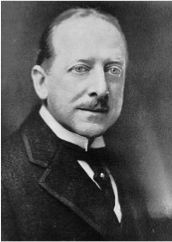
“Apparently, things got pretty dicey for the German folks who lived in the neighborhood during the Great War,” George said, shifting gears again. “Ernst said gangs would go around looking for copies of German newspapers that they would gather up and burn out in the streets. He said that the word ‘German’ used to be on a lot of banks and churches and all of a sudden, the word was taken off. St. Alphonsus Catholic Church used to be called St. Alphonsus German Catholic Church and the First German Zion Evangelical Lutheran Church became just Zion Evangelical Church.”
Lizzie and Mabel had cleared the table and started washing dishes by the time George finished relating all he had learned that day from the little old man down the street.
“Fascinating stories, George,” Tom said pushing back from the table and heading for the radio. “Tomorrow, maybe you could introduce me to Ernst. I have some questions for him.”
“Sure thing Pap,” George responded. “It’s great to get to know what happened in your hometown a long time ago from the people who saw it all happen firsthand. It’s history that will drift away if we don’t ask about it.”
Read more Mabel Files:
Part 1: Introduction
Part 2: Lindy Visits Wheeling
Part 3: T.J. Minns and his “Pal”
Part 4: Music, talk, and danger inside the Minns’ Confectionary
Part 5: Stogies, Sandwiches, and Crocheted Lace
Part 6: The Minns Confectionary Feels the Loss of a Jazz Giant
Part 7: Wheeling’s Underworld and Big Bill
Part 8: When George Met Mabel
Part 9: Wheeling’s Bonnie and Clyde
Part 10a: Fireside Chats and the Flood of ’36
Part 10b: WWVA Jamboree and It’s Wheeling Steel
Read more about Rebecca Harding Davis here.
Read more about German life in Wheeling here.


